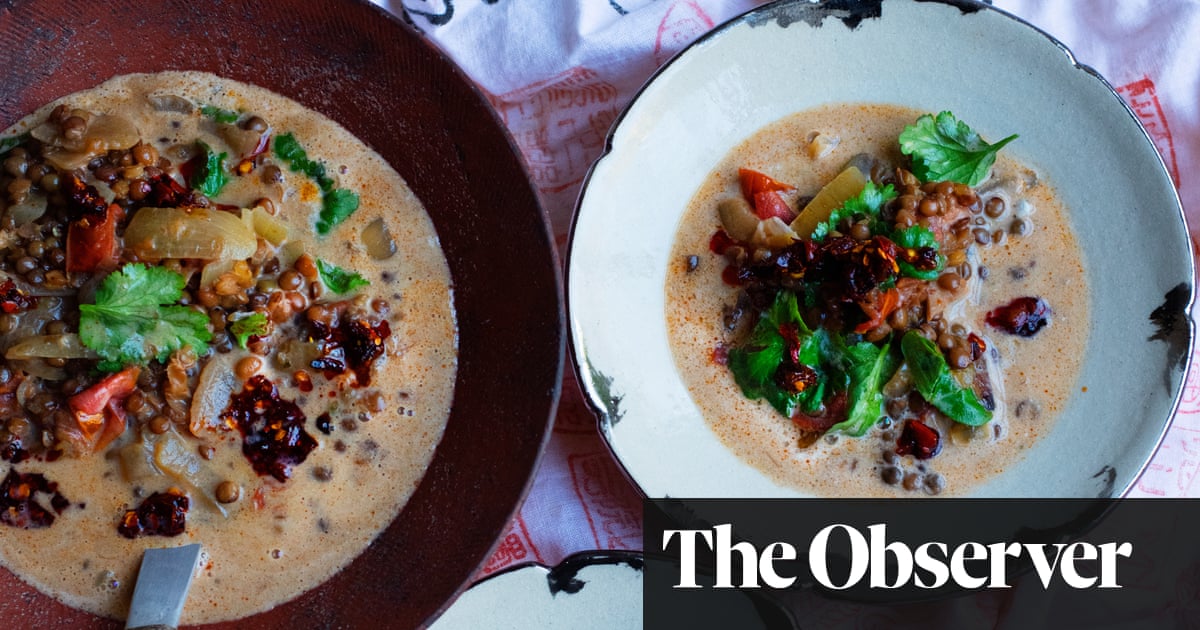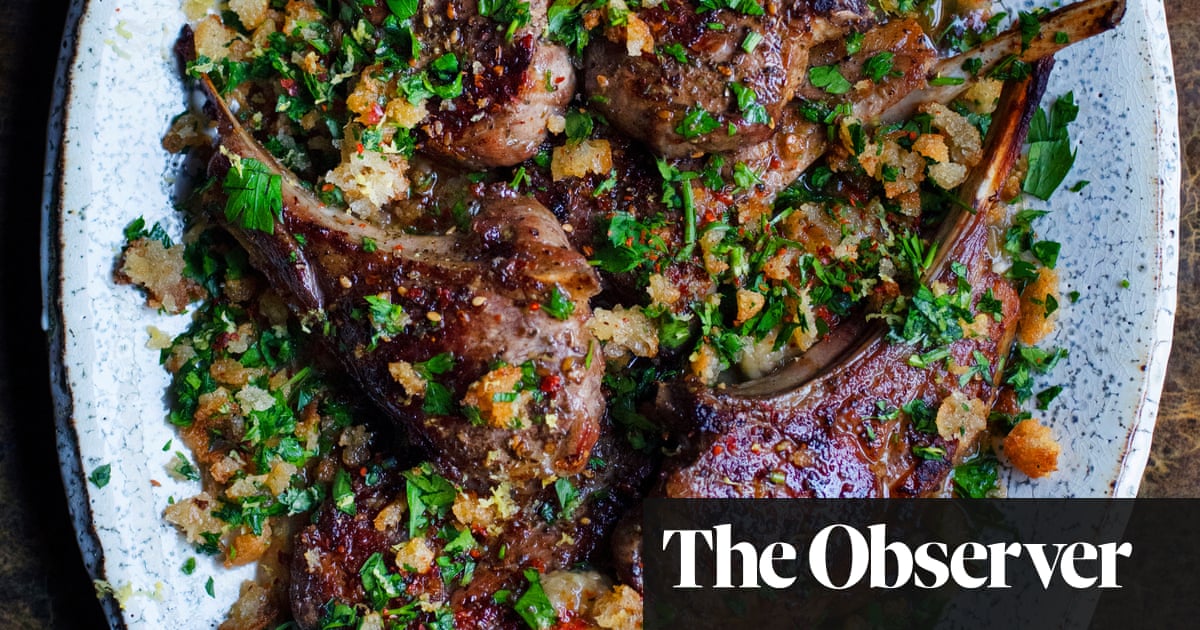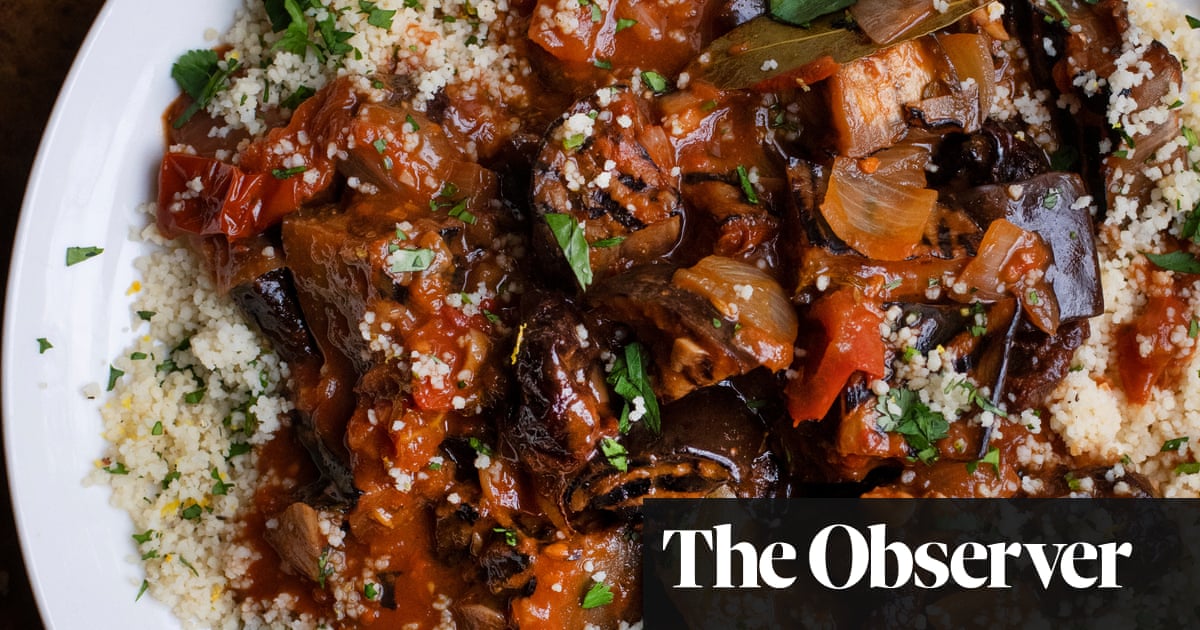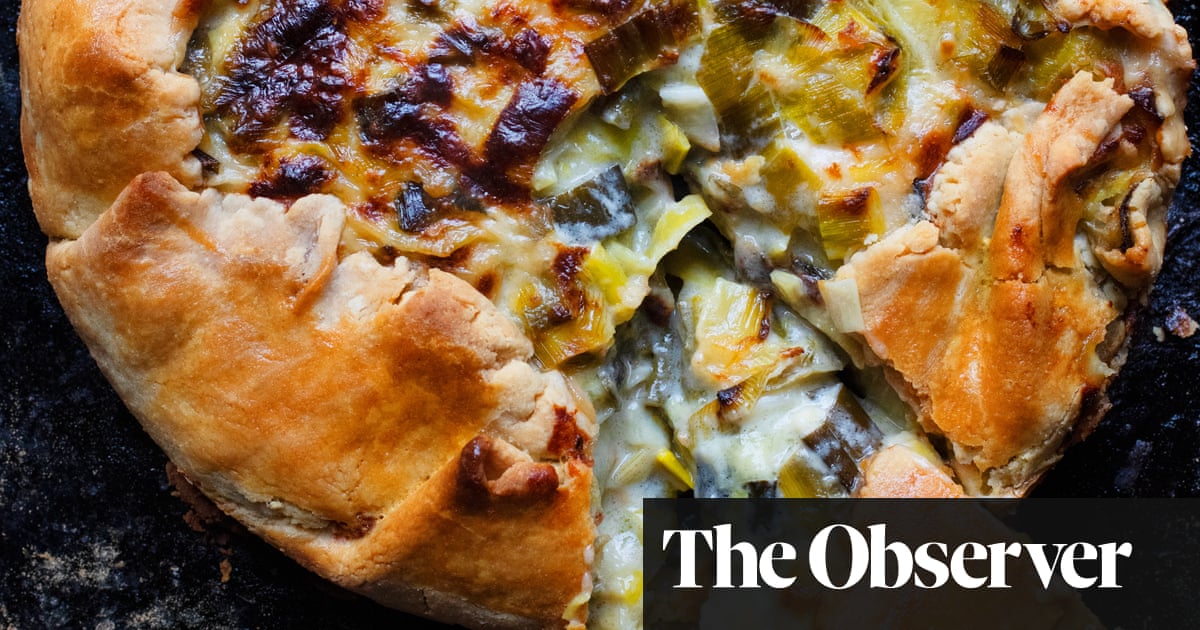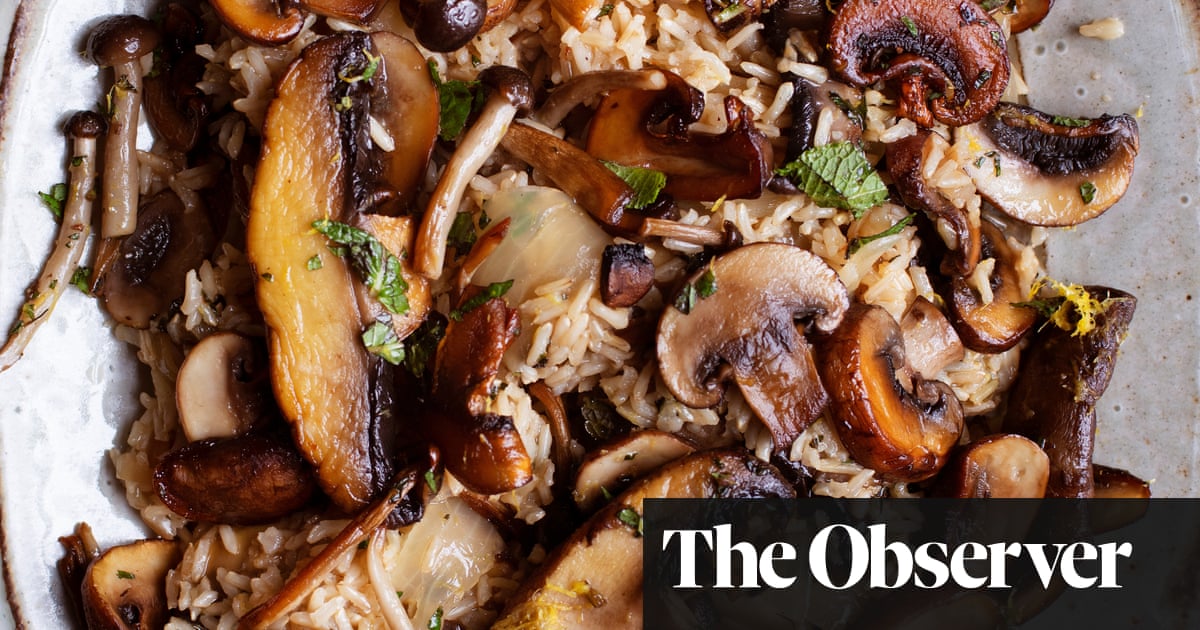
he first pan of pine kernels went up in expensive smoke, so I watched the second batch of diminutive, creamy-white nuts as intently as a hawk might watch a family of field mice, toasting them until they were evenly pale golden in colour.
I folded some of them into a sticky, marzipan and lemon-scented biscuit dough, while the rest were used to freckle the surface once the biscuits were rolled and ready to bake.
I played around a lot with the recipe, finally adding enough egg white to allow the cookies to spread like brandy snaps on the baking sheet, their uneven surface pitted with nuts and crystals of almond paste. You could call them biscuits, because the texture is crisp, like ice, their deckled edges shattering when snapped. But the centre is softly chewy thanks to the marzipan, so cookie might be a more appropriate description. Either way, they were what we wanted with a glass of vin santo in lieu of pudding.
The following day was altogether colder and a proper pudding was called for. I hadn’t made a steamed pud in an age, so out came the old china bowl, the grease-proof paper and string, and I made a bee-line for the dried fruit shelf in the larder, to make a fat, amber-coloured dome dotted with vine-fruits and tart, garnet-red dried cherries.
Pine kernel and lemon cookies
Eaten an hour or so after baking and these are soft, crumbly and cookie-like; a few hours later and they become crisp and biscuity – the sort of thing to serve with coffee or a glass of sweet golden wine. (Dunking is a thoroughly good thing here.) The lemon zest and toasted pine-kernels lend an Italian note. They will keep for a fortnight in a biscuit tin. Makes 15-20 biscuits
pine kernels 100g
marzipan 250g
caster sugar 200g
lemon 1, small
plain flour 35g
egg whites 70ml
Lightly toast the pine kernels in a shallow pan until pale gold in colour, then set aside. Break the marzipan into large pieces and put them in the bowl of a food processor, then process briefly to large crumbs.
Add the sugar to the marzipan, then finely grate the lemon zest and add to the bowl with 35g of the pine kernels. Process for a few seconds to combine and roughly chop the pine kernels. Stir in the flour. In a separate, medium-sized bowl beat the egg whites until almost stiff, then fold in the crumb mixture, mixing until thoroughly combined.
Set the oven at 175C/gas mark 3-4. Line a baking sheet with greaseproof paper. Take 1 heaped tbsp of the mixture, roll it into a ball and then drop it into the reserved toasted pine kernels. Roll the cookie dough in the pine kernels, then place it on the lined baking sheet.
Bake for 10-12 minutes until the cookies have spread. They should look slightly under-done. Remove from the oven and leave them for 10 minutes to settle before transferring them carefully to a cooling rack with a palette knife.
Golden sultana and cranberry sponge
I find it is best to leave the pudding in the switched-off pot, still covered by its lid, for a good 20 minutes before serving. You will need a 1.5 litre pudding basin, lightly buttered. Serves 4
butter 150g
caster sugar 150g
soft dried figs 4
eggs 2
self-raising flour 150g
ground cinnamon 1 tsp
mixed spice ½ tsp
ground ginger 1 tsp
orange 1
milk 2 tbsp
dried cranberries or cherries 50g
golden sultanas 80g
soft dried dates 50g
cream to serve
Cut the butter into small pieces, put them in the bowl of a food mixer and add the sugar and cream until light and fluffy. Cut the dried figs in half horizontally and place them, slightly overlapping, in the bottom of the pudding bowl.
Break the eggs into a small bowl, beat them briefly with a fork, then add, little by little, to the butter and sugar, beating continuously.
Mix together the flour, cinnamon, mixed spice and ground ginger. Finely grate the zest of the orange and combine with the flour. Gradually incorporate the flour into the batter, a couple of heaped tbsp at a time. Mix in the milk.
Have ready a large, deep pan of boiling water. Put a trivet or similar object in the base of the pan for the basin to sit on. Chop the dates into four and mix with the dried fruits, then stir into the pudding mixture. Spoon into the pudding basin, on top of the figs and smooth the surface. If you are using a plastic pudding basin with a lid, then clip on the lid. If using a china basin, cover with a sheet of greaseproof paper, secure with string or a thick rubber band, then cover the top in foil and secure similarly.
Carefully lower the pudding basin into the boiling water and lower the heat to a spirited bubble. Cover with a lid and leave to steam for 2 hours. It is essential to keep an eye on the water level. It should come two thirds of the way up the sides of the pudding basin. Top it up from the kettle as necessary. Remove from the heat and leave the pudding bowl in the hot water for 30 minutes, before removing the paper and foil, running a palette knife around the sides of the pudding and turning it out on to a shallow serving dish.
Follow Nigel on Twitter @NigelSlater




